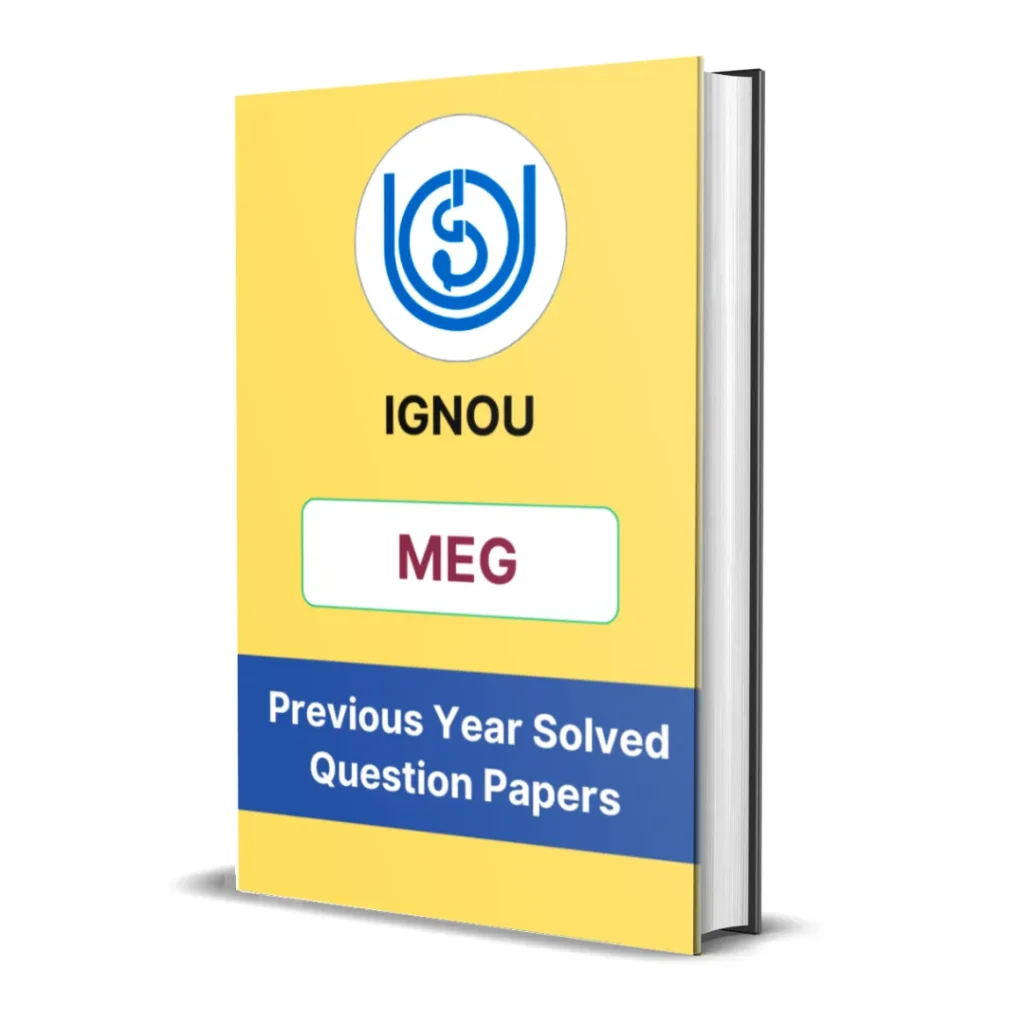IGNOU MEG-05 Block 8 Summary | Contemporary Literary Theory
- Last Updated On August 14, 2025
Table of Contents
Here you will get the detailed summary of IGNOU MEG 5 Block 8 – Contemporary Literary Theory.
We have provided the summary of all units starting from unit 1 to unit 6.

Introduction
IGNOU MEG-5 Block 8 explores Contemporary Literary Theory, engaging with some of the most influential theoretical developments from the late 20th century onwards. This block presents a broad spectrum of critical thought that reshaped how we interpret texts, culture, identity, and power structures. Beginning with foundational issues such as the crisis of meaning and the role of the reader, the block then surveys major theoretical movements like Postmodernism, Psychoanalysis, Postcolonialism, Cultural Studies, and New Historicism. It concludes with a summative reflection on how theory has transformed literary studies into a more dynamic and interdisciplinary field. Through this exploration, learners understand how literature is no longer viewed in isolation, but as part of a broader cultural and ideological matrix.

Unit 1 – Some Basic Issues
This unit introduces the key concerns that underpin contemporary literary theory. It sets the conceptual foundation for the rest of the block.
Core issues include:
-
The crisis of representation: Language does not transparently represent reality.
-
The role of the reader: Emphasis on interpretation as an active process.
-
The death of the author: The author’s intention is no longer central to meaning (Roland Barthes).
-
Multiplicity of meanings: Texts are open to various, often contradictory, readings.
This unit emphasizes how literary theory moved beyond traditional criticism to question assumptions about meaning, authorship, and truth.

Unit 2 – Postmodernism: The Basics
This unit examines Postmodernism, a movement that emerged after World War II and rejected the certainties of Enlightenment thinking.
Key features of Postmodernism:
-
Skepticism toward grand narratives (Lyotard).
-
Blurring of boundaries between high and low culture, fact and fiction, reality and representation.
-
Playfulness, irony, and fragmentation in form and content.
-
Pastiche and parody as stylistic devices.
Influential thinkers:
-
Jean-François Lyotard, Jean Baudrillard, Fredric Jameson.
Postmodernism transformed literary criticism by encouraging non-linear, self-referential, and multi-layered interpretations, highlighting the instability of meaning.
Unit 3 – Psychoanalysis: Freud and Lacan
This unit explores how Psychoanalytic theory provides tools to analyze literature through the unconscious, desire, repression, and language.
Freud’s Contributions:
-
Id, ego, and superego: Human behavior is shaped by internal psychological conflicts.
-
Oedipus complex, dream analysis, and symbolism play a central role in textual interpretation.
-
Literature becomes a space of repression, fantasy, and unconscious wish fulfillment.
Lacan’s Contributions:
-
Reinterpreted Freud using Structuralist linguistics.
-
The unconscious is structured like a language.
-
Introduced concepts like:
-
Mirror stage: Formation of the ego.
-
The Real, The Imaginary, The Symbolic: Orders of human experience.
-
Desire and the Other: Subjectivity shaped through language and absence.
-
This unit emphasizes that texts can be read as psychic structures, shaped by unconscious desires and linguistic displacements.

Unit 4 – Postcolonial Theory: Said, Spivak and Bhabha
This unit presents Postcolonial theory, which critiques colonialism, imperialism, and the legacy of Western dominance in literature and culture.
Edward Said – Orientalism:
-
Western depictions of the East are stereotypical, exoticized, and constructed.
-
The “Orient” becomes a discursive creation used to justify colonial control.
Gayatri Chakravorty Spivak:
-
Known for the essay “Can the Subaltern Speak?”.
-
Highlights how marginalized voices, especially women, are silenced by dominant discourses.
-
Introduces deconstruction and poststructuralist feminism into postcolonial critique.
Homi K. Bhabha:
-
Concepts of hybridity, mimicry, and ambivalence.
-
Challenges fixed notions of identity and culture.
-
Colonial relationships are shown to be fluid and unstable.
Postcolonial theory shifts literary studies toward questions of power, identity, race, and resistance, especially in the context of formerly colonized nations.
Unit 5 – Beginnings of Cultural Studies and New Historicism
This unit discusses two significant movements that broadened literary criticism into interdisciplinary cultural analysis.
Cultural Studies:
-
Emerged in the UK with figures like Raymond Williams, Stuart Hall, and Richard Hoggart.
-
Examines popular culture, media, ideology, and class.
-
Sees literature as one form of cultural production among many.
-
Interested in everyday practices, power, and representation.
New Historicism:
-
Associated with Stephen Greenblatt.
-
Views literary texts as historically embedded—products of the social, political, and ideological forces of their time.
-
Opposes the idea of literature as autonomous or timeless.
-
Uses archival research and cultural context to reinterpret canonical works.
Both approaches encourage reading literature alongside non-literary texts, such as legal documents, media, or political discourse.

Unit 6 – Literary Criticism and Theory: A Summing Up
This unit offers a comprehensive overview of the journey from traditional criticism to contemporary theory.
Key reflections:
-
Traditional literary criticism was formalist and author-centered.
-
Contemporary theory emphasizes language, reader, power, ideology, and culture.
-
Literary studies have become more interdisciplinary, drawing from philosophy, psychology, sociology, political science, and linguistics.
It reinforces that today’s reader is no longer just analyzing literature for beauty or moral lessons, but for its role in constructing and contesting meanings in the world.